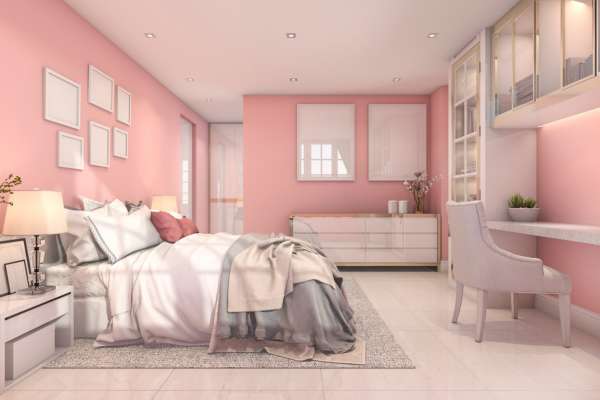Ever wondered, “What is a Bedroom Community?” These unique residential havens are more than just sleepy suburbs on the outskirts of bustling cities. Bedroom community, or commuter towns, are designed primarily for residential living, with most residents traveling to larger cities for work. This article will explore the charm and functionality of these communities, highlighting why many choose to call them home despite the daily commute. From their tranquil environment to more affordable housing options, bedroom communities offer numerous benefits that attract families and professionals alike. Join us as we delve into the features, advantages, and challenges of living in these suburban retreats, providing a clearer picture of their role in modern urban living.
History and Evolution of Bedroom Communities

The concept of bedroom communities gained prominence in the post-World War II era, driven by suburban expansion and the desire for peaceful residential areas away from bustling city centres. As cities became more industrialised and crowded, many sought the tranquillity and space that suburban areas offered. The rise of personal vehicles and improved transportation infrastructure made commuting feasible, encouraging this shift. Bedrooms communities were characterised by single-family homes with ample yard space, designed to offer a higher quality of life. This historical shift not only reflected changing economic conditions but also evolving preferences for privacy and family-oriented living, setting the stage for the growth of these communities around urban centres.
Characteristics of Bedroom Communities

Bedroom communities are distinctive residential zones, primarily characterised by their design and function as predominantly residential areas. These communities typically feature limited commercial and industrial activity, fostering a peaceful, residential atmosphere away from the hustle and bustle of city centres. The residents of these areas usually commute to larger urban centres for employment, making these communities heavily reliant on nearby cities for job opportunities. This dependency underscores a unique urban-suburban dynamic, where bedroom communities provide a quieter living environment while still maintaining access to the economic engines of larger cities. Understanding these characteristics is essential for appreciating the lifestyle and appeal of living in a bedrooms community.
Demographics
Bedroom communities typically attract a distinct demographic profile characterised by family-oriented residents seeking a quieter lifestyle away from the urban core. These areas commonly house middle to upper-middle-class families, drawn by the promise of more spacious homes and often superior school districts. Income levels in these communities tend to be higher than average, reflecting the professional status of commuters who work in nearby cities but prefer the suburban tranquillity. The commuting patterns are notably uniform, with many residents travelling to urban centres for work during the week. This demographic trend supports a lifestyle that balances the bustling city’s career opportunities with the suburban environment’s residential appeal.
Benefits of Living in a Bedroom Community

Living in a bedroom community offers several enticing benefits that draw families and individuals away from the hustle and bustle of city life. These communities are renowned for their peaceful, quieter living environments, which provide a stark contrast to the constant noise and activity of urban centres. Additionally, bedrooms communities typically boast lower crime rates, adding a layer of safety and security that is highly valued by residents. Perhaps one of the most appealing advantages is the affordability of housing. In these areas, residents often find that their housing dollars stretch further, allowing them access to larger properties or more amenities than similarly priced homes in city centres. This combination of tranquillity, safety, and affordability makes bedroom communities a desirable option for many.
Challenges and Criticisms
While bedroom communities offer many advantages, they are not without challenges and criticisms. One significant downside is the heavy dependency on commuting. Residents often face long daily drives to work, which can lead to increased stress and reduced personal time. Additionally, these areas typically lack diverse local amenities and services, which means less convenience and fewer social and cultural activities within walking distance. Furthermore, bedroom community contribute to urban sprawl, extending the environmental impact through increased vehicle emissions and the consumption of more land. This expansion can disrupt local ecosystems and lead to a greater carbon footprint, raising concerns about sustainable living practices in these suburban settings.
Economic Impact
Bedroom communities significantly impact local and regional economies, primarily through their influence on real estate markets. These areas often see heightened demand for residential properties, which can drive up home values and attract real estate investments. Although local spending in bedrooms communitie may be lower compared to urban centres due to limited commercial activities, the spending power of residents often supports nearby cities where they work. Furthermore, the growth of these communitie increases the demand for infrastructure improvements, including roads, public transportation, and utilities, necessitating substantial investments from local governments. This cycle of growth and development can lead to economic expansion both within the bedroom community and in the adjacent urban areas.
Comparison with Mixed-Use and Urban Communities

Bedroom communities differ significantly from mixed-use and urban areas, primarily in their design and daily life rhythm. While bedrooms communitie are predominantly residential, offering peaceful settings away from the hustle and bustle of the city, mixed-use developments integrate residential, commercial, and recreational spaces within a single environment. This integration allows residents in urban and mixed-use areas to work, live, and play in close proximity, reducing the need for daily commutes and enhancing convenience. In contrast, bedroom community typically require residents to travel to urban centers for employment and entertainment, which can lead to longer commute times but often also means more spacious living conditions and potentially lower housing costs.
The Future of Bedroom Communities

The future of bedroom community is being shaped by several compelling trends. As telecommuting becomes more prevalent, the necessity for daily commutes diminishes, making living in these quieter, more suburban areas more attractive and feasible. Additionally, a growing emphasis on sustainable living is influencing bedrooms communitie to integrate more green spaces, energy-efficient buildings, and local amenities that reduce the need for long car rides. Advances in transportation technology, such as the expansion of electric vehicle charging stations and improved public transit options, are also making these communitie more accessible and environmentally friendly. Together, these trends are transforming bedrooms communitie into appealing choices for modern living.
FAQs on “What is a Bedroom Community?”
1. What is a bedroom community?
✅ A residential area where most people commute to nearby cities for work.
2. Why are they called bedroom communities?
✅ Residents primarily sleep there but work in nearby cities.
3. What are the benefits of living in a bedroom community?
✅ Quieter environment, affordable housing, and lower crime rates.
4. What are common features of bedroom communities?
✅ Predominantly residential, few local amenities, high commuter population.
5. How do bedroom communities impact local economies?
✅They boost local real estate but can strain infrastructure due to commuting.
Conclusion
Understanding what a bedroom community is reveals more than just its definition as a residential area where people primarily sleep and commute elsewhere for work. These communitie play a significant role in the urban-suburban dynamic, offering a tranquil alternative to the bustling city life. As we look to the future, bedroom community are evolving, influenced by the rise of remote work, sustainability initiatives, and advancements in transportation. These changes promise to enhance the quality of life for residents, making these areas not just places to sleep, but also vibrant, sustainable community with their own unique charms and amenities. The evolving nature of bedrooms communities reflects broader shifts in how we balance living, working, and sustainability in our environments.

